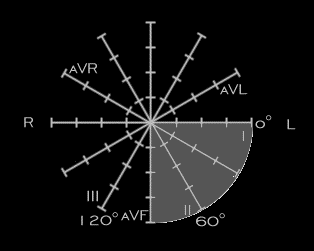
Thus, the following "rules" apply when considering the configuration in the frontal plane leads of the normal P wave, i.e. P waves that originate in the sino-atrial node.
Lead I - positive or isoelectric - never negative
Lead II - always positive - never negative
Lead III - positive, isoelectric or negative
Lead aVR - always negtive - never isoelectric or positive
Lead aVL - positive, isoelectric, or negative
Lead aVF - positive or isoelectric - never negative
